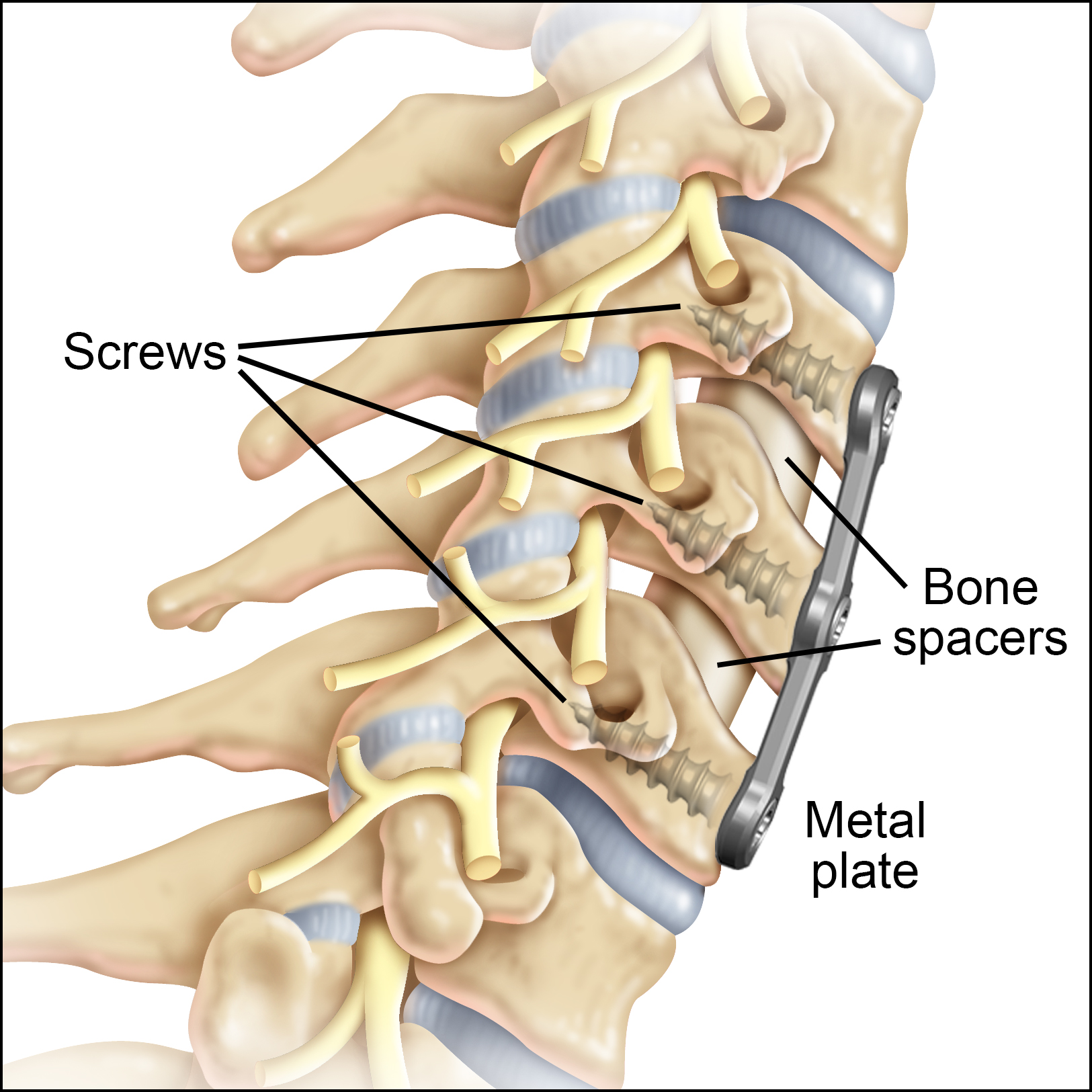
Anterior Cervical Discectomy and Fusion (ACDF) is a surgery that relieves spinal cord and nerve compression in the neck by removing a degenerative or herniated disc. It’s a common, relatively safe procedure that often results in long-term success. While ACDF recovery time can depend on the individual, there are typical steps that most people can expect to experience in the weeks and month after surgery.
In this post, we’ll review what to expect after ACDF surgery, from post-op to a month out, as well as activities to avoid throughout recovery.
What happens in post-op after ACDF?
Typically, once you wake up in the post-op area, any pain will be addressed and you’ll be moved to a regular room. While recovering in the hospital, the goal will be to increase physical activity, such as walking or sitting up in a chair. Many patients who have ACDF surgery can go home the same day, though you may be kept longer if you’re having trouble breathing, if your blood pressure is unstable, or if your doctor believes a longer stay is necessary.
Some pain and discomfort are common after ACDF but can be managed with pain medication. Patients are usually only prescribed pain medication for two to four weeks, as they’re addictive. Once you’re no longer taking pain medications, over-the-counter acetaminophen can be taken in its place.
Common complaints after ACDF include a sore throat, hoarseness, and difficulty swallowing. Symptoms typically resolve themselves within a month.
Your surgeon will provide discharge instructions that detail what to expect, medicine to take, and what to avoid. Follow instructions carefully for a smooth recovery.
What to expect in the first two weeks after ACDF
Within the first week, you may need assistance with day-to-day tasks like dressing and bathing. However, many people are able to take care of themselves within a day or two. Household work, however, should be avoided. Don’t do any tasks that involve bending over or lifting, such as yard work or cleaning the kitchen.
While you don’t need to keep your neck completely still, be wary of moving your head too quickly. Some surgeons may instruct their patients to wear a neck collar or brace for additional support.
Get lots of rest
One of the best things a patient can do for a speedy recovery is get lots of sleep (at least eight hours a night) and rest. Given the pain and discomfort associated with ACDF recovery, it may be more comfortable to sleep in a propped or reclining position, using pillows, an adjustable bed, or a reclining chair.
Challenge yourself to walk further every day
Taking short walks every day can help to relieve body stiffness. Start small and work your way up, increasing your distance by one to two blocks every day.
What to expect three to four weeks out
Three to four weeks after ACDF, most patients begin to feel much better but still experience some weakness or fatigue.
Resume moderate activity
Surgeons typically allow patients to resume light housework, lifting slightly heavier objects (around ten pounds or less), around this time. Remember that recovery varies greatly from person to person, so while some may have been at this point early in the recovery phase, some might still be struggling to get there.
Starting physical therapy
If your surgeon recommends physical therapy, it will likely begin three to four weeks after ACDF. PT can help relieve pain and inflammation, as well as strengthen muscles that stabilize the neck and back. Physical therapists can also recommend adjustments that make it easier to return to work.
What to avoid after ACDF
- Smoking, which increases risks of complications, such as infection, and prolongs healing
- Sitting for extended amounts of time
- Lifting anything over five pounds
- Physical labor, such as housework or working in the yard
Recovery setbacks
Recovery varies from person to person, and it’s normal to have your good and bad days. Your surgeon will provide you with detailed information regarding challenges you might expect, many of which won’t be cause for alarm. But there are certain symptoms that are considered more dangerous and will require medical attention. A few include, but aren’t limited to:
- Fever
- Difficulty breathing or swallowing
- Discharge, pain, or redness around the incision that’s worsening
- Constipation that doesn’t improve
Call your surgeon or doctor if you experience any of these symptoms.
References